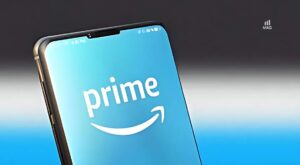
The Livestream E-Commerce Revolution is transforming retail, set to hit $6 trillion by 2035
The rise of online shopping has changed how we buy things. But even with the convenience of e-commerce, something was missing: the personal touch.
Enter livestream e-commerce. This trend combines the ease of online shopping with the engagement of live video, creating a new way to connect with customers.
But is this trend something Amazon sellers should care about? The answer is a resounding yes.
The Growing Livestream E-commerce Revolution
The global livestream e-commerce revolution is reshaping the retail landscape at an unprecedented pace. According to a new Transparency Market Research report, the market valued at $940.3 billion in 2024 and projected to skyrocket to $6.08 trillion by 2035, This rapid expansion highlights the transformative power of live shopping and its impact on consumer behavior, digital engagement, and online retail strategies.
The concept of livestream commerce first gained traction in China in 2016, when Alibaba introduced Taobao Live, merging e-commerce with interactive, real-time video streaming. Since then, the industry has evolved into a major force in online retail, enabling consumers to engage with brands, ask questions, and purchase products instantly during live video presentations.
Neil Patel"People like to shop using live streaming because it makes it easier to ask questions, interact with brands, and engage with others in the brand’s community."
This interactive shopping experience has revolutionized the way consumers discover and buy products, offering a blend of entertainment and commerce that keeps audiences engaged while driving immediate purchasing decisions. As a result, livestream shopping has become a core digital strategy for retailers and e-commerce platforms worldwide.
Industry Overview & Future Outlook
The livestream e-commerce industry thrives at the intersection of technology and retail, with AI-driven insights helping brands understand consumer behavior in real time. This data-driven approach enables businesses to offer personalized shopping experiences, increasing consumer trust and driving higher conversion rates.
Looking ahead, the industry’s growth will be fueled by continuous technological advancements, including AI-powered recommendation engines, augmented reality (AR) try-on features, and seamless social media integrations. As consumer preferences evolve, livestream commerce is expected to expand beyond China into key markets in North America, Europe, and Southeast Asia.
Dolby.io"Live shopping offers a unique blend of entertainment, convenience, and real-time interaction that traditional ecommerce lacks."
Market Scope and Global Expansion
Several major companies are driving innovation and growth in the livestream e-commerce space:
- Alibaba from China – The pioneer of livestream shopping through Taobao Live.
- TikTok from China – Integrating live shopping features within its massive social media platform.
- Kuaishou from China – Specializing in interactive livestream shopping, especially in smaller markets.
- Amazon Live from United States – Expanding live shopping events for creators and influencers.
- JD.com from China – Enhancing livestream shopping through its extensive logistics network.
- Pinduoduo from China – Leveraging group buying and social commerce with livestream integrations.
- YouTube from United States – Our Amazon agency holds weekly live AMAs on YouTube, wherein other users also use to sell products during streams.
The Asia-Pacific region—particularly China and South Korea—dominates the livestream e-commerce market. Platforms like Taobao Live and TikTok Shop have driven explosive growth in these areas. However, North America and Europe are rapidly catching up as Amazon, YouTube, and Facebook integrate livestream shopping into their platforms.
Why Livestream E-commerce works
A comparative analysis by Sprii on live shopping versus traditional e-commerce reveals that viewers engage with live shows for significantly longer—spending an average of 15 to 30 minutes, whereas they typically spend just 54 seconds on a standard e-commerce website. This heightened engagement leads to lower cart abandonment rates and substantially higher conversion rates, often reaching 50% to 60%, compared to the 2.5% average seen in traditional online shopping.
Instant Conversions
Traditional e-commerce can take days or months to close a sale as shoppers compare options and read reviews. Livestream shopping, however, accelerates this process, driving purchases in minutes through real-time engagement, product demos, and limited-time offers.
Fewer Returns
With live product demonstrations and instant Q&A, shoppers make better-informed decisions, reducing return rates to 10%–15%. This is far lower than the 20%–30% seen in traditional e-commerce.
Enhancing, Not Replacing E-Commerce
Livestream shopping complements traditional retail, bridging the gap between physical stores and online shopping. As brands adopt this strategy, it’s proving to be a powerful tool for boosting sales and customer engagement.
Joining the Livestream E-commerce Revolution via Twitch
Aside from Amazon Live, sellers also have another Amazon-owned platform to use if they are jumping into the bandwagon of the live stream e-commerce revolution: Twitch. While often associated with gaming, Twitch presents a unique, and currently underutilized, opportunity for Amazon sellers looking to connect with a distinct audience.
While primarily known as a gaming platform, Twitch commands 61% of the global livestream market, with users watching over 21.1 billion hours of content in 2024, according to an EMARKETER report. Despite its niche focus, Twitch’s 37.2 million US users represent a highly engaged audience that brands could tap into for live shopping experiences.
A Hidden E-Commerce Opportunity
Livestream shopping is gaining momentum in the US. This year, 21.7% of digital buyers are expected to shop via livestream, and skepticism around the trend is fading. Plus, Twitch offers access to a unique audience – 65% of its users aren’t active on Facebook or TikTok, making it a valuable alternative for brands.
Brands Are Taking Notice
Companies are starting to experiment. According to Beauty Packaging, e.l.f. Beauty was the first major beauty brand that has set up a Twitch channel. Old Spice, Wendy’s, and Logitech are also some of the brands using Twitch as a marketing channel, as cited by Flytant.






